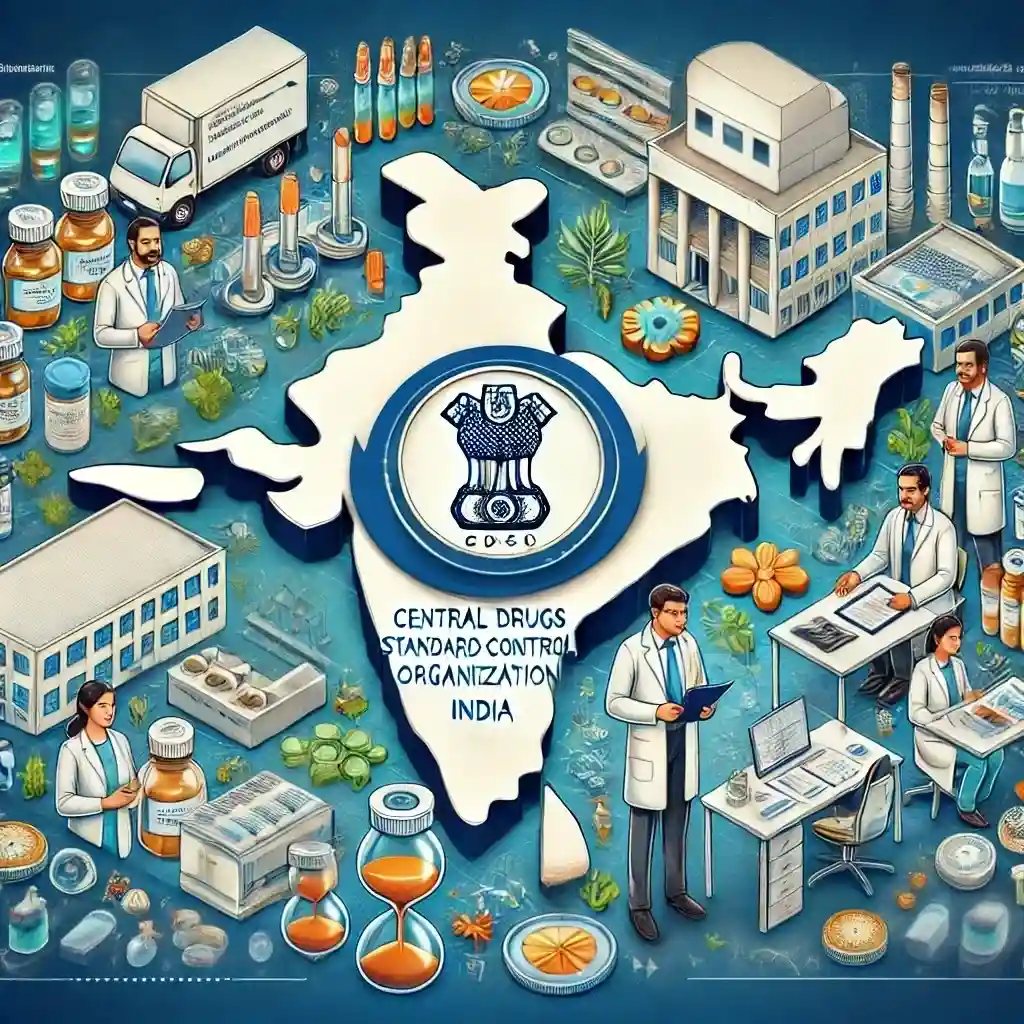Mercilina Norman

History of quality standards in India
India started an industrialization process after gaining independence in 1947 with the goal of being economically independent and developed. In order to sustain the expanding population and economy, the early years were primarily focused on developing core industries, such as steel, heavy machinery, and infrastructure.However, the lack of regular procedures resulted in inconsistent product quality, which hampered trade ties internationally as well as local competitiveness. The need for consistent quality standards grew as India attempted to broaden its industrial base and boost exports.
Early Beginnings: Ancient practices and traditions
The origins of the idea of quality in healthcare may be found in the early medical professions of ancient societies, when their basic standards were established by observation and trial and error. Early methods of diagnosis, therapy, and patient care are documented in ancient medical literature from civilizations including Mesopotamia, China, India, and ancient Egypt. Although there were significant cultural differences in these practices, the fundamental ideas of safety, effectiveness, and patient-centered care set the stage for later norms.
Middle ages to renaissance: Guilds and Professional standards
In Europe, guilds and professional groups of doctors and healers started to form during the Middle Ages and Renaissance. To control the education, credentials, and moral conduct of practitioners, these guilds created standards of conduct and codes of conduct. Ensuring expertise, moral behavior, and responsibility in the provision of healthcare was the goal.
Industrial revolution and modern medicine: Emergence of scientific standards
The fields of science, technology, and medicine have advanced significantly since the Industrial Revolution. The development of anesthetic, antiseptic methods, and germ theory transformed medicine, but they also brought attention to the necessity of standard operating procedures in order to guard against infections, enhance surgical results, and guarantee patient safety. Establishing rules and standards for medical education, practice, and ethics which were initiated by organizations like the American Medical Association (AMA) and the Royal College of Surgeons (RCS) in the United Kingdom.
20th Century: Rise of quality improvement initiatives

The 20th century witnessed significant strides in healthcare quality improvement initiatives. The Flexner Report in the United States (1910) led to the standardization of medical education and accreditation of medical schools. The development of antibiotics, vaccines, and diagnostic technologies further underscored the importance of evidence-based medicine and standardized protocols.
In the mid-20th century, the concept of quality assurance gained prominence in healthcare settings. Quality assurance programs focused on monitoring, evaluating, and improving the quality of care delivered to patients. The introduction of Total Quality Management (TQM) principles from industries such as manufacturing influenced healthcare organizations to adopt systematic approaches to quality improvement, emphasizing patient satisfaction, process efficiency, and continuous learning.
Late 20th Century to present: Era of accrediation and regulatory frameworks
National and international organizations tasked with establishing and overseeing standards for healthcare quality were established in the second part of the 20th century. To advance quality and safety in healthcare delivery, organizations like the World Health Organization (WHO), the National Institute for Health and Care Excellence (NICE) in the UK, and the Joint Commission in the US created guidelines, standards, and certification programs.
After highlighting the frequency of medical errors in its seminal study “To Err Is Human” (1999), the Institute of Medicine worked to improve patient safety by implementing standard operating procedures, error reporting systems, and patient-centered care models. This study served as a catalyst for a global movement that improved healthcare quality, decreased adverse occurrences, and encouraged accountability and openness in healthcare systems around the globe.
KEY ELEMENTS OF HEALTHCARE QUALITY STANDARDS
Healthcare quality standards are multifaceted, encompassing various dimensions crucial to ensuring optimal patient care. Clinical effectiveness lies at the core, emphasizing evidence-based practices and guidelines aimed at achieving the best possible clinical outcomes for patients. Patient safety is another critical dimension, involving rigorous measures to prevent medical errors, infections, and adverse events that could jeopardize patient well-being. Patient-centeredness underscores the importance of respecting patient preferences, values, and individual needs throughout the decision-making process and in the delivery of care. Timeliness in healthcare services is essential to reducing wait times and minimizing delays, ensuring timely access to necessary medical interventions and treatments. Efficiency plays a pivotal role in maximizing resource utilization and minimizing waste within healthcare delivery systems, thereby enhancing overall operational effectiveness. Finally, equity remains a fundamental principle, striving to ensure fair and equitable access to healthcare services for all individuals and communities, irrespective of socioeconomic status or geographic location. Together, these elements form the foundation of healthcare quality standards, guiding healthcare providers and institutions in their commitment to delivering high-quality, safe, patient-centered, timely, efficient, and equitable care to populations worldwide.
REGULATORY FRAMEWORK AND ACCREDITATION BODIES FOR HEALTHCARE QUALITY STANDARDS IN INDIA
1. Ministry of Health and Family Welfare (MoHFW)

The Ministry of Health and Family Welfare (MoHFW) is the central governing body responsible for formulating and implementing policies related to healthcare delivery in India. It plays a pivotal role in setting national health priorities, allocating resources, and overseeing regulatory compliance within the healthcare sector. MoHFW’s responsibilities-
- Policy Formulation: Developing and implementing policies to improve healthcare access, affordability, and quality across India.
- Regulatory Oversight: Monitoring compliance with healthcare regulations, guidelines, and standards set forth by various statutory bodies.
- Public Health Initiatives: Implementing national health programs, disease prevention strategies, and promoting health education and awareness among the population.
MoHFW operates through its departments and subordinate bodies, such as the Directorate General of Health Services (DGHS), which oversees specific aspects of healthcare regulation and implementation.
2. National Accreditation Board for Hospitals & Healthcare Providers (NABH)

NABH is the principal accreditation body for healthcare organizations in India and operates under the aegis of the Quality Council of India (QCI). It was established to set benchmarks and assess the quality of healthcare services provided by hospitals, clinics, and other healthcare facilities. Key functions of NABH-
- Accreditation Standards: Developing accreditation standards and assessment protocols based on international best practices and tailored to the Indian healthcare context.
- Accreditation Process: Conducting assessments and awarding accreditation to healthcare organizations that demonstrate compliance with NABH standards in areas such as patient care, clinical outcomes, infrastructure, and management systems.
- Continuous Improvement: Facilitating continuous quality improvement through feedback, training programs, and knowledge sharing among accredited institutions.
NABH accreditation is highly regarded and serves as a mark of quality and patient safety assurance for healthcare providers in India. It encourages institutions to adopt best practices, enhance operational efficiency, and prioritize patient-centered care.
3. Central Drugs Standard Control Organization (CDSCO)

CDSCO is the national regulatory authority responsible for regulating the quality, safety, and efficacy of pharmaceuticals, medical devices, and biological products in India. It operates under the Drugs and Cosmetics Act, 1940 and the Rules thereunder. Key responsibilities of CDSCO-
- Regulatory Approvals: Evaluating and granting marketing approvals for drugs, vaccines, medical devices, and biological products based on scientific assessment and compliance with regulatory requirements.
- Good Manufacturing Practices (GMP): Ensuring compliance with GMP guidelines to maintain quality standards in the manufacturing, storage, and distribution of pharmaceutical products.
- Post-Marketing Surveillance: Monitoring marketed products for adverse events, quality defects, and compliance with regulatory standards to safeguard public health.
- Inspections and Audits: Conducting inspections of manufacturing facilities, clinical trial sites, and distribution networks to ensure adherence to regulatory norms.
CDSCO plays a critical role in protecting public health by ensuring that healthcare products meet stringent quality standards before they are made available to patients and healthcare providers.
Challenges in Healthcare Quality Standards
Despite significant strides in healthcare quality standards, several challenges hinder their effective implementation and adherence in India. These challenges span across resource disparities, regulatory complexities, technological integration, and workforce development issues.
1. Variability in Implementation
Disparities in Resources: Healthcare facilities in India vary widely in terms of resources, infrastructure, and financial capabilities. Urban centers often have access to state-of-the-art equipment, skilled personnel, and robust infrastructure, whereas rural and underserved areas struggle with limited resources and basic healthcare amenities. This disparity affects the consistent adoption and implementation of standardized healthcare practices across different settings.
Infrastructure Challenges: Inadequate infrastructure, including lack of proper sanitation, electricity, and healthcare facilities, poses significant barriers to delivering high-quality care in rural and remote areas. The absence of essential resources impacts the ability to adhere to stringent quality standards uniformly.
Training and Skill Development: Variability in the training and skill levels of healthcare professionals further complicates the implementation of quality standards. Continuous professional development and standardized training programs are essential to ensure that healthcare providers across all settings adhere to best practices and guidelines.
2. Regulatory Burden
Complex Regulatory Environment: Healthcare organizations in India must comply with multiple regulatory frameworks and accreditation requirements imposed by various bodies such as NABH, CDSCO, state health departments, and local governing bodies. The overlapping regulations often lead to confusion, redundancy, and increased administrative burden on healthcare providers.
Resource Intensiveness: Achieving and maintaining compliance with regulatory standards necessitates significant financial investments, human resources, and administrative efforts. Small and medium-sized healthcare facilities, in particular, struggle to allocate resources efficiently, impacting their ability to meet all regulatory requirements consistently.
3. Data Integration and Technology
Health Information Technology (HIT) Challenges: The integration of health information technology systems, including electronic health records (EHRs), data analytics platforms, and interoperability standards, is crucial for quality improvement initiatives. However, interoperability issues between different IT systems, lack of standardized data formats, and cybersecurity concerns present significant challenges.
Data Utilization and Usability: While healthcare facilities collect vast amounts of patient data, translating this data into actionable insights for quality improvement remains a challenge. Effective data governance strategies, robust analytics capabilities, and user-friendly interfaces are essential to harnessing the full potential of health data for improving patient outcomes and operational efficiency.
4. Workforce Development
Continuous Education and Training: The rapid evolution of medical knowledge and technological advancements necessitates ongoing education and training for healthcare professionals. Continuous professional development programs tailored to local needs and clinical practices are crucial to maintaining competency in delivering high-quality care and adhering to updated standards.
Staffing Shortages: Shortages of skilled healthcare professionals, including doctors, nurses, and allied health workers, exacerbate challenges in implementing quality standards. Addressing workforce shortages through recruitment, retention strategies, and capacity-building initiatives is essential to ensure adequate staffing levels and enhance healthcare delivery capabilities.
Addressing Challenges and Moving Forward
Addressing the challenges in healthcare quality standards requires a multifaceted approach involving collaboration between government agencies, healthcare organizations, industry stakeholders, and educational institutions. Key strategies are
Policy Reforms: Streamlining regulatory frameworks, reducing administrative burdens, and harmonizing standards across different regulatory bodies to simplify compliance requirements.
Investment in Infrastructure: Prioritizing investments in healthcare infrastructure, especially in underserved areas, to ensure equitable access to quality healthcare services.
Technology Adoption: Promoting the adoption of interoperable health information systems, telemedicine platforms, and digital health solutions to enhance data integration, efficiency, and patient care outcomes.
Capacity Building: Strengthening healthcare workforce development through continuous education, training programs, and skill enhancement initiatives tailored to local healthcare needs.
Prospective Pathways and Advancements
Digital Health
Digital health refers to the fusion of artificial intelligence (AI), electronic health records (EHRs), and telemedicine to improve patient outcomes monitoring, diagnosis, and treatment.
Population Health Management
A focus on community-based treatments, chronic illness management, and preventive care to enhance overall health outcomes.
Value-Based Care
Move toward payment schemes that honor healthcare professionals for meeting patient outcomes goals and providing superior care.
Global Health Security
Enhancing the ability of health systems to withstand shocks and be ready to react to pandemics, new infectious illnesses, and threats to international health.
In purview of the above information the history of quality standards in healthcare is a testament to humanity’s commitment to improving health outcomes, advancing scientific knowledge, and ensuring patient safety. From ancient healing practices to modern evidence-based medicine, the evolution of standards reflects our collective efforts to promote excellence, accountability, and equity in healthcare delivery worldwide.
As healthcare systems continue to evolve, the challenge lies in balancing innovation with the principles of quality, safety, and patient-centered care. By embracing continuous improvement, collaboration, and ethical stewardship, stakeholders across the healthcare spectrum can forge a future where every individual receives the highest standard of care, regardless of geography or socioeconomic status.
In essence, the journey of healthcare quality standards is not just a chronicle of progress—it is a testament to our ongoing commitment to uphold the highest ideals of healing, compassion, and scientific rigor in service to humanity.
Authors Biography
Mercilina Norman is currently pursuing an MBA in healthcare and hospital administration. She also has experience as a staff nurse.

